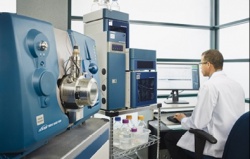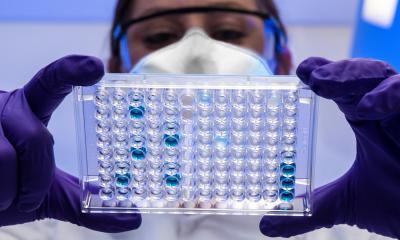Misdiagnoses of vitamin D deficiencies
Most clinical laboratories use immunoassays routinely to measure 25-hydroxyvitamin D (25OH D) in serum. The metabolites of vitamin D are important in the regulation of calcium and bone metabolism.

Immunoassays are high throughput, and relatively cheap and easy to use, but have some important limitations. It has been found that immunoassays have problems recognising vitamin D2 after it has been ingested, giving a significant under-estimation of the concentration of 25OH D2 . (Ann. Clin. Biochem. 43: 23-30). This has an impact on the total 25OH D measured, potentially leading to misdiagnosis.
Professor of Medicine Bill Fraser and his research team at Norwich Medical School have published many papers on vitamin D deficiencies and associated pathologies. Over the last decade, they have made advances in tandem mass spectrometry (MS) techniques that can be used to measure vitamin D.
The professor described the importance of being able to measure individual contributions of vitamin D2 and vitamin D3: ‘Unlike vitamin D3, the body does not produce vitamin D2. It is only present when it has been given in food or as a supplement. Therefore, patients who have been given vitamin D2 supplements may have sufficient levels of 25OH D2, which may not be detected by some immunoassays’. Tandem MS on the other hand can accurately measure 25OH D2 and D3, giving separate values for both forms (Mass Matters. 62: 13-14).
Recently introduced systems, such as the IVD-M Analyser and IVD-MS Kits (SCIEX), provide simple, robust MS solutions for routine clinical diagnostics such as 25OH D testing.
Tandem MS methods to measure 25OH D are generally more reliable and offer greater sensitivity than immunoassays. One perceived issue with the use of tandem MS methods in clinical laboratories is that of capacity. Prof Fraser supports the use of tandem MS, and said, ‘The capacity of tandem MS can be increased by running samples overnight, or on two HPLC systems at a time. Immunoassays are able to accommodate a larger number of samples per assay but, because of their limited accuracy, there may be a requirement for the immunoassay to be repeated.’
To increase the throughput and sensitivity of the MS method further, the Fraser team has been working on improving the method for extracting 25OH D, as well as automation and semi-automation of the front-end of the mass spectrometer.
Another issue relevant to both platforms is that of variability, which, in 25OH D measurements, is observed between assays, between platforms and between laboratories (Ann. Clin. Biochem. 46: 3-4).
Attempts have been made by the Centres for Disease Control and Prevention (CDC) to find a reference material that can be used to standardise immunoassays and tandem MS methods for 25OH D measurement. A standard reference material known as SRM 972 has been used for calibrating assays. This standard is suitable for liquid chromatography (LC)-MS/MS methods but is not ideal for immunoassays. Therefore, a tandem MS derived value has been used to standardise some immunoassays. This can further increase the potential for error and decrease the accuracy of immunoassays compared with MS.
Given the advantages of tandem MS methods over immunoassays, Professor Fraser hopes to see tandem MS methods to measure 25OH D become routine in clinical laboratories.
29.07.2014











